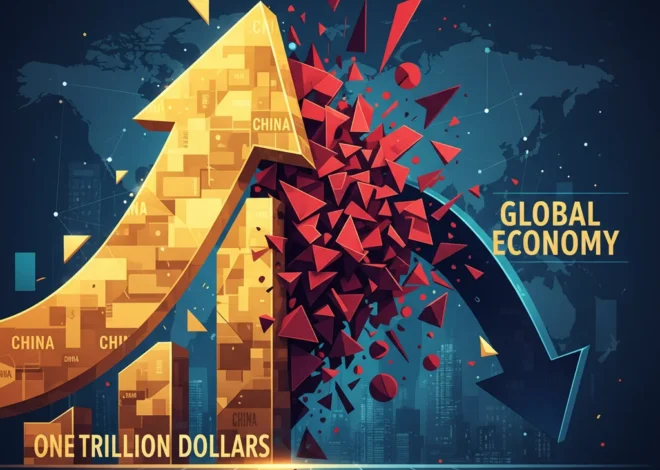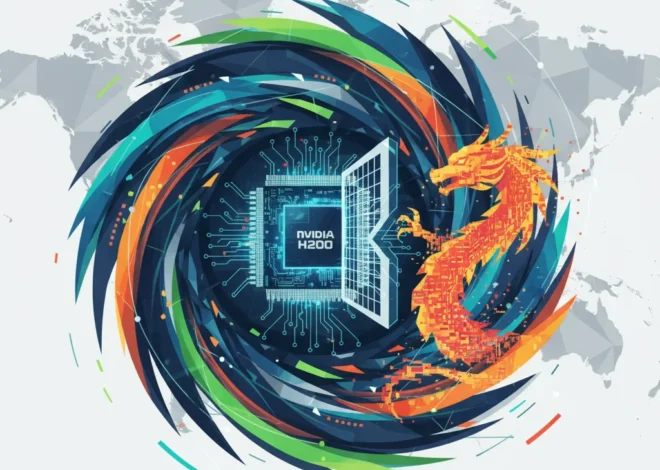
Beyond the Handshake: Decoding the Economic Tremors of the Trump-South Korea Summit
In the high-stakes theater of global politics, a single meeting can send ripples across the world’s financial markets. The arrival of former U.S. President Donald Trump in South Korea for pivotal talks with President Lee Jae Myung is precisely such a moment. While headlines may focus on diplomatic pleasantries and security alliances, for those in finance, investing, and business, the real story lies in the economic undercurrents. This summit, strategically preceding a meeting with China’s leader Xi Jinping, is not just about geopolitics; it’s a critical inflection point for international trade, technological competition, and the future of the global economy.
For investors and business leaders, understanding the potential outcomes is paramount. The discussions are set to touch upon the sensitive nerves of the U.S.-South Korea relationship: the cost of security, the balance of trade, and the complex dance of navigating the rivalry between Washington and Beijing. The decisions made in these closed-door meetings could reshape supply chains, influence the stock market, and define the next chapter for key industries, from semiconductors to automotive manufacturing. Let’s dissect the core issues at play and analyze their profound implications for your investment strategy and business outlook.
The Economic Fulcrum: Re-evaluating the U.S.-South Korea Trade Partnership
At the heart of the U.S.-South Korea alliance lies a robust economic partnership, institutionalized by the Korea-U.S. Free Trade Agreement (KORUS FTA). In 2023, the total trade in goods and services between the two nations reached an estimated $207.6 billion, making South Korea one of America’s most significant trading partners. However, this relationship has not been without its points of friction, particularly concerning trade deficits and market access—issues that were central to the Trump administration’s “America First” economic policy.
Any new negotiations are likely to revisit these themes. A potential push to renegotiate terms of the KORUS FTA could introduce significant volatility. Key sectors to watch include:
- Automotive Industry: A major export for South Korea to the U.S., this sector is often a target in trade disputes. Any discussion of tariffs or quotas could immediately impact the stock prices of giants like Hyundai and Kia, as well as their vast network of U.S.-based suppliers and manufacturing plants.
- Steel and Manufacturing: Historically subject to U.S. tariffs, the steel industry will be listening closely. Changes in trade policy here affect everything from construction costs to manufacturing inputs, with direct consequences for industrial investing portfolios.
- Agriculture: While the U.S. enjoys a significant agricultural trade surplus with South Korea, access for American beef, pork, and dairy products remains a perennial topic of negotiation. Expanded access could be a boon for the U.S. farm belt, while any restrictions would have the opposite effect.
The core of the matter for the economics of this summit is whether the focus will be on collaborative growth or zero-sum negotiation. A move towards protectionism could disrupt established supply chains and increase costs, fueling inflation. Conversely, a strengthening of the trade alliance could unlock new opportunities in high-growth sectors, including green energy and biotechnology, fostering a more resilient and integrated partnership.
The UK's New Tax Frontier: Why High-Earners in Partnerships are in the Government's Crosshairs
The Trillion-Dollar Defense Question: Security Costs and Market Stability
Beyond trade, the “security ties” mentioned in the initial reports are a critical economic issue. The U.S. maintains approximately 28,500 troops in South Korea as a deterrent against North Korean aggression, a cornerstone of regional stability for decades. The cost of this presence is shared under the Special Measures Agreement (SMA), a framework that has been a frequent subject of contentious debate.
The Trump administration famously demanded a dramatic increase in South Korea’s contribution, arguing that allies should bear a greater share of the financial burden for their own defense. According to a Congressional Research Service report, the 2021 agreement saw South Korea increase its contribution by 13.9%, a significant but far cry from the initial demands. A revival of this hardline stance could have several economic consequences:
- Fiscal Pressure on South Korea: A substantially larger defense payment would divert funds from other areas of the South Korean government’s budget, potentially impacting domestic economic stimulus, infrastructure projects, or social spending.
- Market Uncertainty: The perception of instability in the security alliance could spook investors. Geopolitical risk is a major factor in international finance, and any sign of weakening U.S. commitment to the region could lead to capital flight from South Korean markets and a devaluation of the won (KRW), impacting currency trading.
- Defense Industry Impact: Heightened negotiations often spur increased defense spending. This could benefit U.S. and South Korean defense contractors, presenting a specific, albeit volatile, investment thesis for those in the aerospace and defense sectors.
The Tech Frontier: Semiconductors, Fintech, and the U.S.-China Chessboard
Perhaps the most critical dimension of this summit for the modern global economy is technology. South Korea is a lynchpin in the global tech ecosystem, home to semiconductor behemoths like Samsung and SK Hynix. This places it directly at the center of the strategic competition between the U.S. and China.
The U.S. has been actively working to secure its semiconductor supply chain and limit China’s access to advanced chip technology. This has involved pressuring allies like South Korea to align with its export controls and invest in U.S.-based manufacturing. The outcome of these talks will have a direct and immediate impact on the global tech sector and the stock market.
This is also where emerging financial technologies come into play. South Korea boasts one of the world’s most dynamic fintech scenes. The intersection of advanced technology and finance presents several key areas of interest:
- Supply Chain Finance: As companies diversify their supply chains away from China, there’s a growing need for sophisticated financial technology to manage new complexities. There is immense opportunity for cross-border collaboration on blockchain-based platforms that offer greater transparency and efficiency in tracking goods and payments from new manufacturing hubs.
- Cross-Border Payments and Banking: A stronger U.S.-South Korea economic bloc could streamline regulations for banking and investment firms, fostering greater integration and making it easier for fintech innovators in both countries to scale their operations.
- Digital Asset Regulation: With both nations navigating the evolving landscape of digital currencies and blockchain assets, policy alignment could create a more predictable and secure environment for institutional investing in this nascent asset class.
To illustrate the deep integration of their economies, particularly in high-value sectors, consider the top categories of goods traded between the two nations.
| Top U.S. Exports to South Korea | Top U.S. Imports from South Korea |
|---|---|
| Industrial Machinery & Equipment | Vehicles and Automotive Parts |
| Mineral Fuels (Oil, Gas) | Industrial Machinery & Electronics |
| Electrical Machinery (incl. Semiconductors) | Electrical Machinery (incl. Semiconductors) |
| Aircraft and Parts | Iron and Steel Products |
| Medical Instruments | Pharmaceuticals |
Data synthesized from the U.S. Census Bureau. This table highlights the reciprocal nature of the tech and industrial trade, underscoring why policy alignment is so critical.
Sequoia's Breaking Point: When Partner Politics Trigger a C-Suite Resignation
Actionable Insights for Navigating the Aftermath
Regardless of the specific outcomes, this summit introduces a period of potential change. For savvy investors and forward-thinking business leaders, the key is not to react, but to prepare.
For Investors:
- Review Sector Exposure: Re-evaluate your holdings in sectors highly sensitive to trade policy, such as automotive, steel, and semiconductors. Consider if your portfolio is overly concentrated in companies that could be negatively impacted by tariffs or supply chain disruptions.
- Monitor Currency Markets: Geopolitical shifts can cause significant fluctuations in the USD/KRW exchange rate. Those involved in currency trading or holding international assets should monitor this closely.
- Look for Opportunities in Resilience: Consider investing in companies that are key to building more resilient supply chains, including logistics, cybersecurity, and domestic manufacturing technology.
For Business Leaders:
- Scenario Plan for Supply Chains: Model the potential impact of different trade scenarios on your supply chain. Identify alternative suppliers and logistics routes to mitigate risk.
- Engage with Policy Makers: Stay informed about the details of any new trade or security agreements. Industry associations are valuable resources for understanding and influencing policy.
- Invest in Financial Technology: Leverage fintech solutions to gain better visibility and control over your international financial operations, from hedging currency risk to optimizing cross-border payments.
The Ultimate Bull Market: Why Civil Disagreement is the Most Valuable Asset in Today's Economy
Conclusion: A Summit of Substance Over Symbolism
The meeting between Donald Trump and Lee Jae Myung is far more than a diplomatic photo opportunity. It is a negotiation at the confluence of global security, technological supremacy, and economic ideology. The discussions on trade balances, defense costs, and strategic alignment on China will create tangible effects that reverberate through the global economy.
For anyone engaged in international finance, investing, or business, the key takeaway is the reinforcement of geopolitical risk as a primary driver of market dynamics. The era of stable, predictable globalization is being replaced by a more complex landscape of strategic alliances and competitive friction. By understanding the intricate connections between a political summit in Seoul and the global financial ecosystem, you can better position yourself not just to weather the potential turbulence, but to capitalize on the opportunities that emerge from this new world order.


